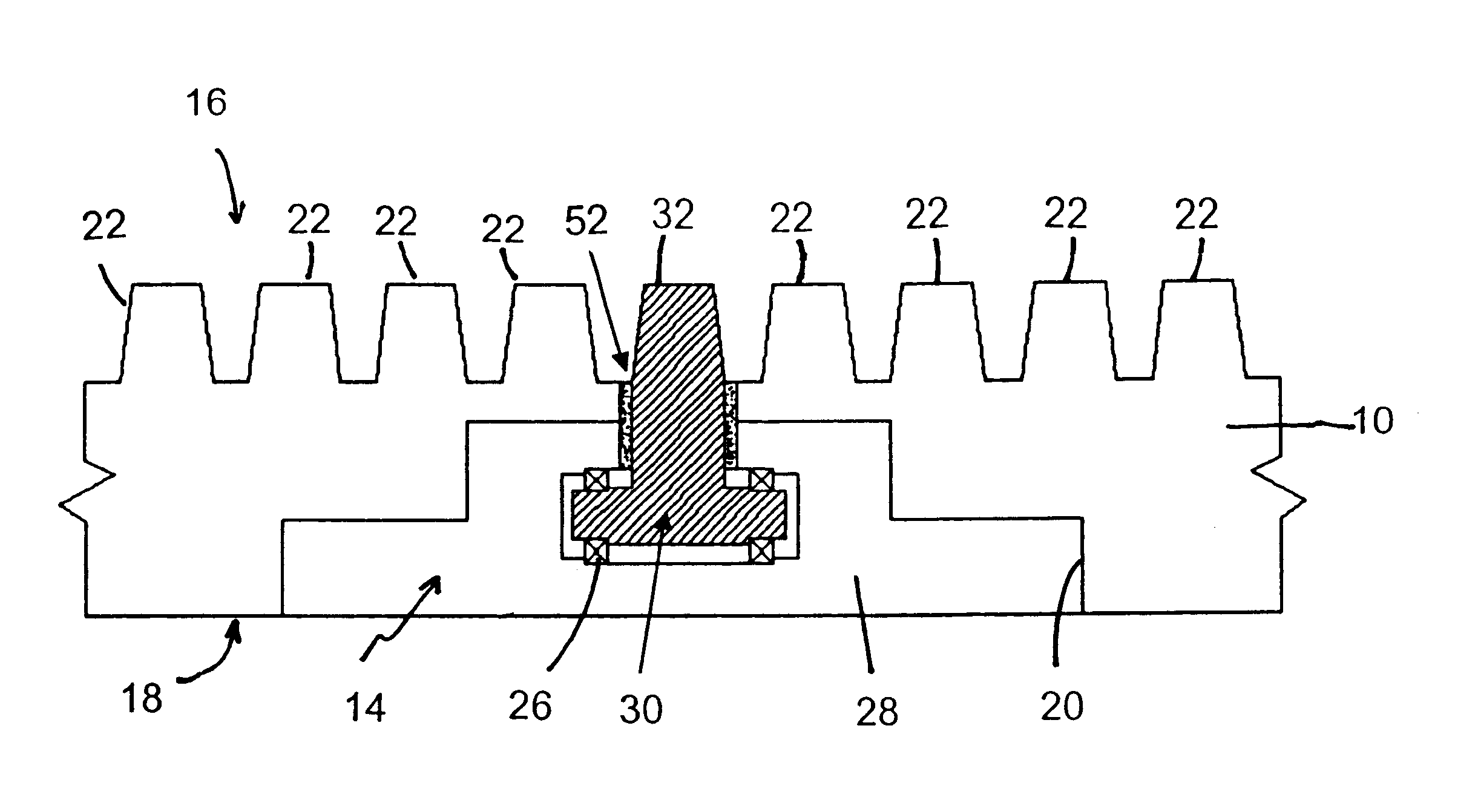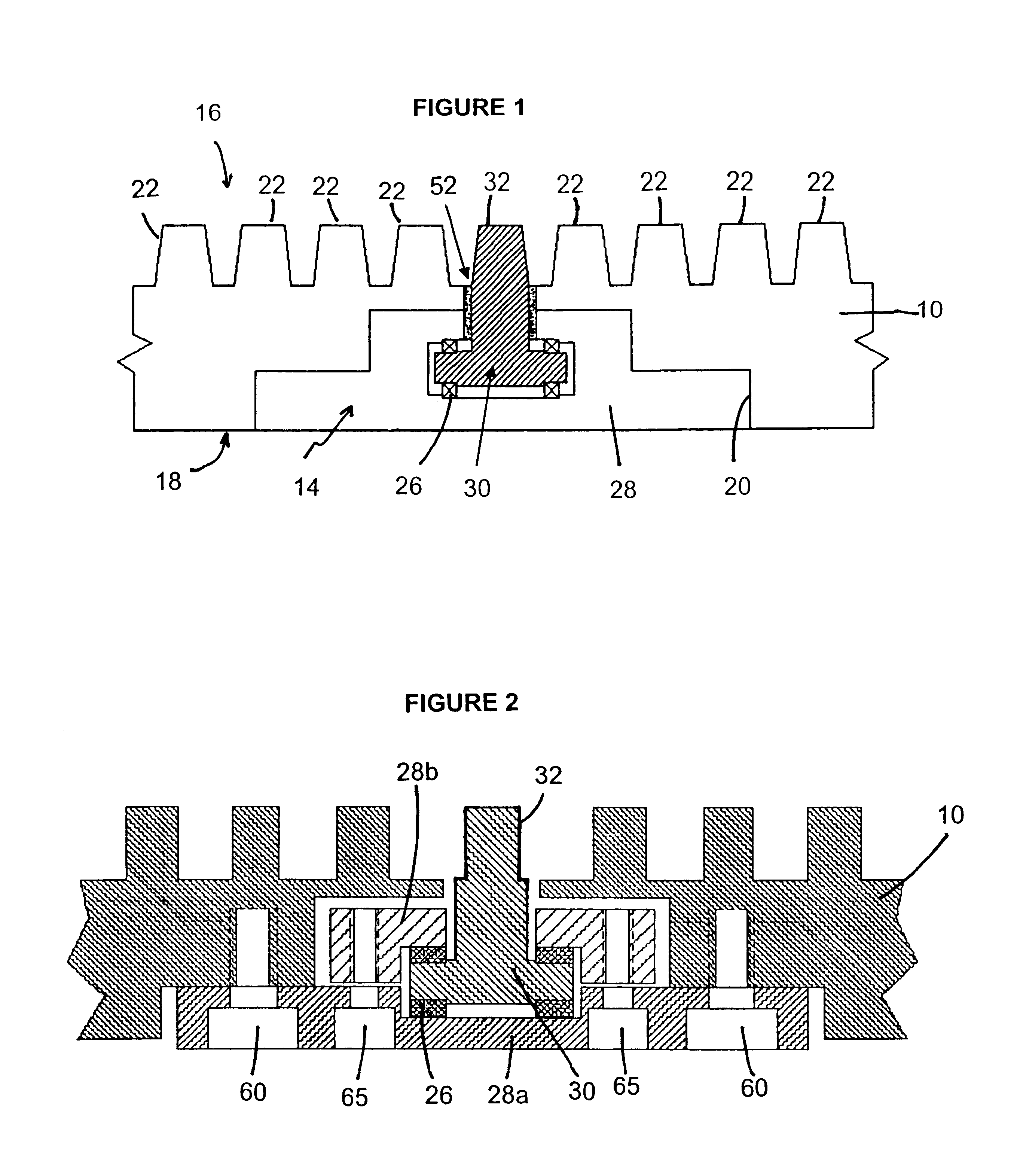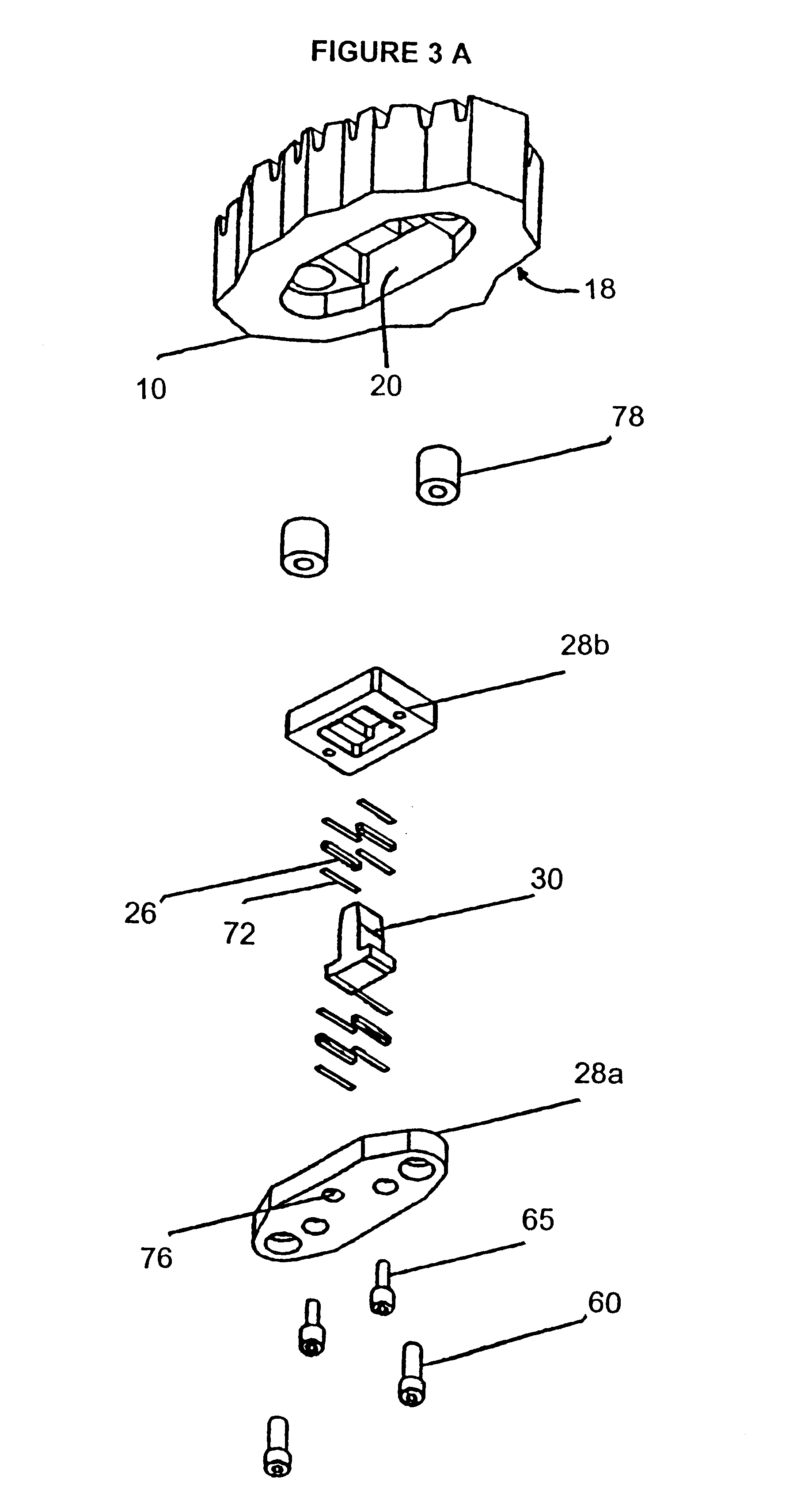Refiner force sensor
a technology of force sensor and refiner, which is applied in the direction of textiles and papermaking, grain treatment, papermaking, etc., can solve the problems of failure of standard pressure sensors, and insufficient parameters to fully characterize the refining action
- Summary
- Abstract
- Description
- Claims
- Application Information
AI Technical Summary
Benefits of technology
Problems solved by technology
Method used
Image
Examples
working example
A force sensor according to the embodiment of FIG. 2 was installed in a laboratory refiner. The refiner had a diameter of 30 cm and operated at atmospheric pressure. The refiner was fed with chemi-thermomechanical pulp at a consistency of approximately 20%. FIGS. 17A and B show the normal and shear forces calculated using the signals from two of the piezo-ceramic element sensors 26. In FIG. 17A, the refiner was running at 1260 rpm, corresponding to a period of approximately 270 μs between bar passings (a bar-passing frequency of about 3.70 kHz). In FIG. 17B the refiner was running at a higher speed of 2594 rpm, corresponding to a bar-passing period of 131 μs (a bar-passing frequency of about 7.63 kHz). From these results, it can be seen that normal and shear forces related to individual bar crossings can be measured with a force sensor according to the present invention.
The piezo electric elements used in the initial testing above were found to have poor dimensional control. As a re...
PUM
| Property | Measurement | Unit |
|---|---|---|
| Curie temperature | aaaaa | aaaaa |
| Curie temperature | aaaaa | aaaaa |
| resonant frequency | aaaaa | aaaaa |
Abstract
Description
Claims
Application Information
 Login to View More
Login to View More - R&D
- Intellectual Property
- Life Sciences
- Materials
- Tech Scout
- Unparalleled Data Quality
- Higher Quality Content
- 60% Fewer Hallucinations
Browse by: Latest US Patents, China's latest patents, Technical Efficacy Thesaurus, Application Domain, Technology Topic, Popular Technical Reports.
© 2025 PatSnap. All rights reserved.Legal|Privacy policy|Modern Slavery Act Transparency Statement|Sitemap|About US| Contact US: help@patsnap.com



